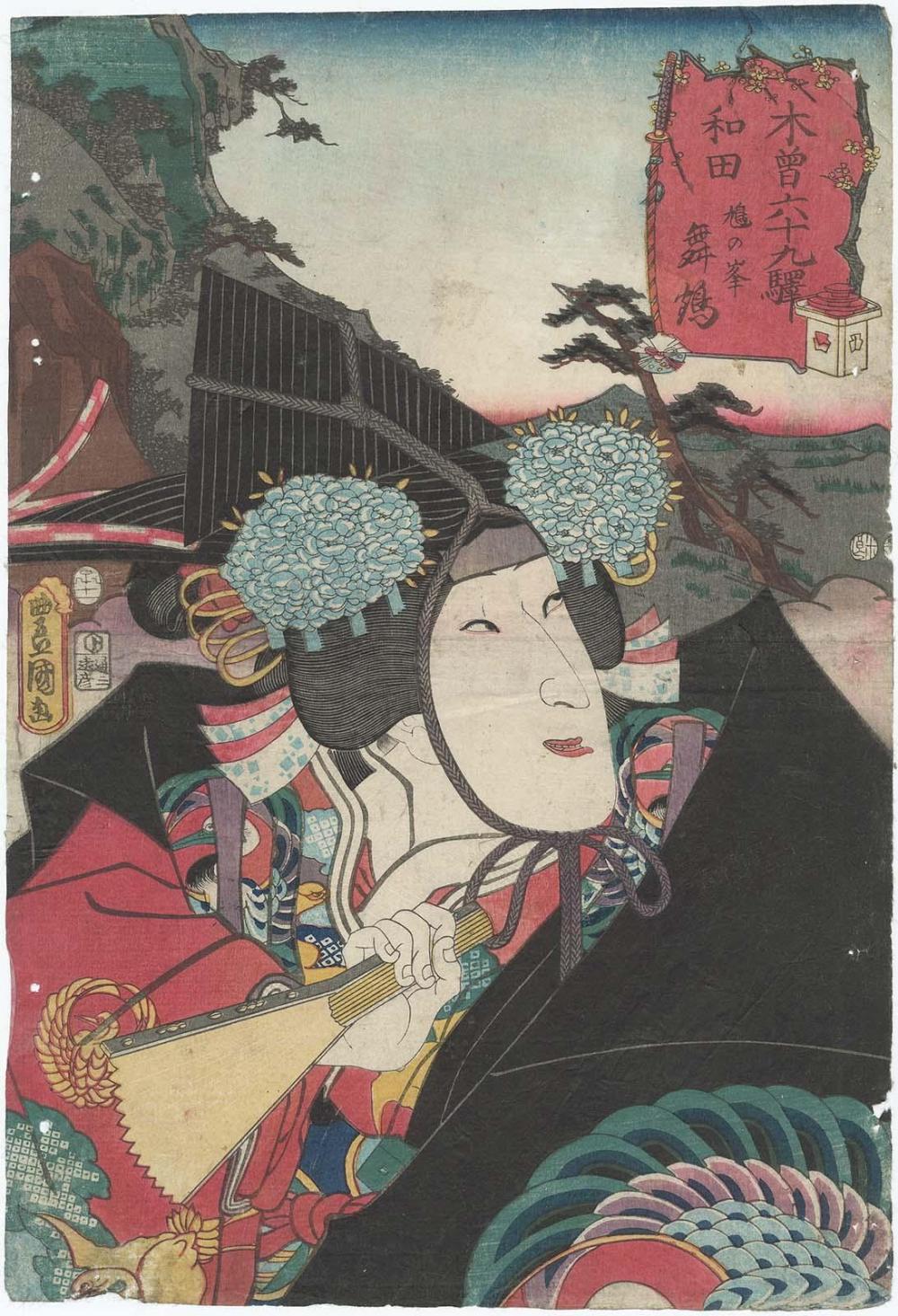Advanced Search 
「木曽六十九駅 和田 鳩の峰 舞鶴」 初代坂東しうか

Hato Pass at Wada Station (Wada, Hato no tôge): Actor Bandô Shûka I as Maizuru, from the series The Sixty-nine Stations of the Kisokaidô Road (Kisokaidô rokujûkyû eki)
「木曽六十九駅 和田 鳩の峰 舞鶴」 初代坂東しうか
Japanese
Edo period
1852 (Kaei 5), 11th month
Medium/Technique
Woodblock print (nishiki-e); ink and color on paper
Dimensions
Vertical ôban; 35 x 24 cm (13 3/4 x 9 7/16 in.)
Credit Line
William Sturgis Bigelow Collection
Accession Number11.42727
NOT ON VIEW
CollectionsAsia, Prints and Drawings
ClassificationsPrints
DescriptionStation 29.
Maizuru is the sister of Kobayashi Asahina. In some versions of the armor-pulling scene (Kusazuribiki), it is she rather than Asahina who restrains the over-impetuous Soga no Gorô at Wada's Banquet (Wada no sakamori); hence the association with Wada Station. she wears the dance costume in which she performed at the banquet.
Maizuru is the sister of Kobayashi Asahina. In some versions of the armor-pulling scene (Kusazuribiki), it is she rather than Asahina who restrains the over-impetuous Soga no Gorô at Wada's Banquet (Wada no sakamori); hence the association with Wada Station. she wears the dance costume in which she performed at the banquet.
Signed
Toyokuni ga, in toshidama cartouche
豊国画(年玉枠)
豊国画(年玉枠)
Marks
Censors' seals: Mera, (Watanabe), Rat 11
No blockcutter's mark
改印:米良、(渡辺)、子十一
彫師:なし
No blockcutter's mark
改印:米良、(渡辺)、子十一
彫師:なし
ProvenanceBy 1911, purchased by William Sturgis Bigelow (b. 1850–d. 1926), Boston [see note 1]; 1911, gift of Bigelow to the MFA. (Accession Date: January 19, 2005)
NOTES:
[1] Much of Bigelow's collection of Asian art was formed during his residence in Japan between 1882 and 1889, although he also made acquisitions in Europe and the United States. Bigelow deposited many of these objects at the MFA in 1890 before donating them to the Museum's collection at later dates.
NOTES:
[1] Much of Bigelow's collection of Asian art was formed during his residence in Japan between 1882 and 1889, although he also made acquisitions in Europe and the United States. Bigelow deposited many of these objects at the MFA in 1890 before donating them to the Museum's collection at later dates.
